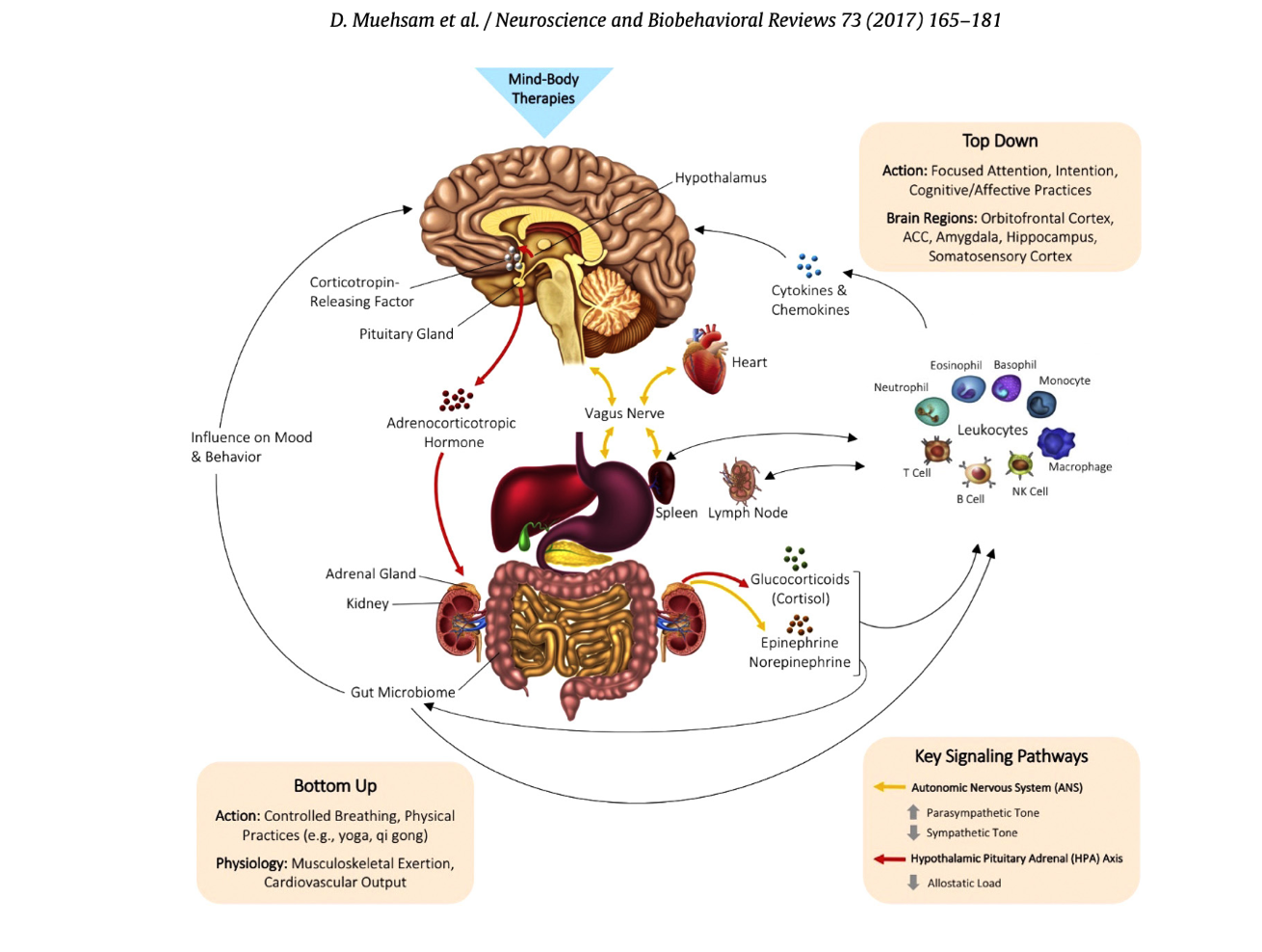Acupuncture/Acupressure
Like mudras, acupuncture and acupressure tap into certain points of the body to activate connections between the brain and the body. In ancient Chinese medicine, the insertion of acupuncture needles along certain energy points is used to improve and balance Qi, or the life force and energy circulating through the body. One study reported that acupuncture increased levels of endorphins and serotonin, hormones that lower pain perception and increase feelings of well-being. Acupuncture has also been shown to reduce PTSD severity and improve depression, pain, and other aspects of physical and mental health function. Acupressure targets points on the body without the use of needles.

